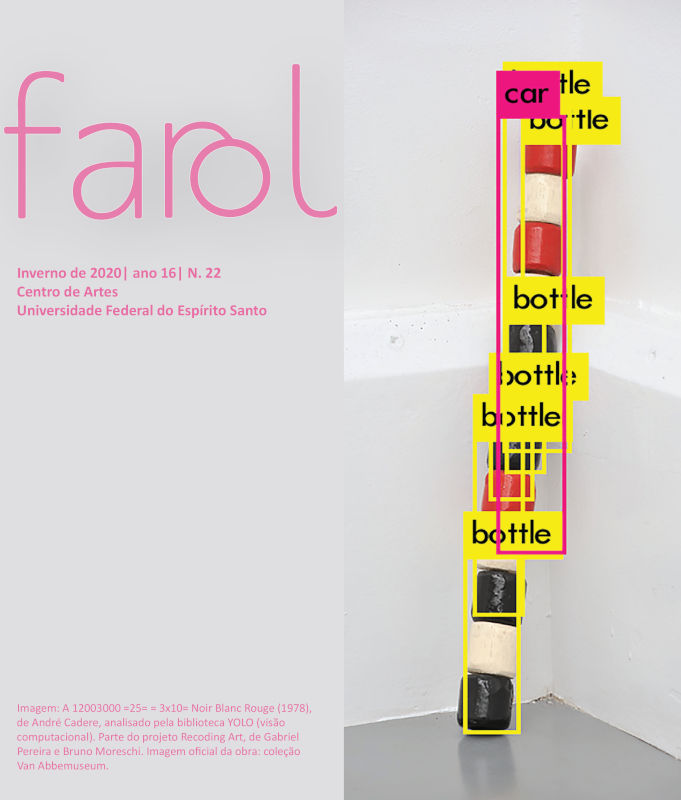Recoding Art
Van Abbemuseum collection
DOI:
https://doi.org/10.47456/rf.v1i22.32686Resumo
When Varèse lived in that street sixty years earlier, he was creating Poème Electronique, a commission from the Philips company. The eight-minutes song would become the soundtrack of the pavilion created by Le Corbusier at the 1958 Brussels World's Fair. For this composition, Varèse gathered trivial sounds from Eindhoven, noises that would only be the disposable sounds of everyday life for many. But not the composer who, exhibiting keen attention and sensitivity, saw poetic power in these sounds and produced a striking composition. [...]
Referências
Crawford, K. and Joler, V. 2018, Anatomy of an AI System, viewed 25 July 2019, https://anatomyof.ai/.
Cross, K. 2008, “Guilty Memory of the Future”, Flash Art, viewed 25 July 2019, https://flash---art.com/article/katherine-cross-on-robots-uprising/#.
Eubanks, V. 2018, Automating Inequality: How High-Tech Tools Profile, Police, and Punish the Poor. St. Martin’s Press, NY.
Fraser, A. 2005, Was ist institutionskritik? Texte Zur Kunst, vol. 59.
Gray, M. L. and Suri, S. 2019, Ghost Work: How to Stop Silicon Valley from Building a New Global Underclass. Houghton Mifflin Harcourt, Boston.
Johnson, C. D. About the Mnemosyne Atlas. Viewed 25 July 2019, https://warburg.library.cornell.edu/about
Kipling, R. 2013, The complete works of Rudyard Kipling. Inktree, Birmingham.
Lewitt, S. 1967, Paragraphs on Conceptual Art. Artforum, NY.
Medina, E. 2011, Cybernetic revolutionaries: Technology and politics in Allende’s Chile. MIT Press, Cambridge.
O’Neil, C. 2016, Weapons of Math Destruction. Crown Books, Largo.
Powles, J. and Nissenbaum, H. 2018, The Seductive Diversion of ‘Solving’ Bias in Artificial Intelligence. Viewed 25 July 2019, https://medium.com/s/story/the-seductive-diversion-of-solving-bias-in-artificial-intelligence-890df5e5ef53
Steyerl, H. 2009, “In Defense of the Poor Image”, e-flux, vol. 10, viewed 25 July 2019, https://www.e-flux.com/journal/10/61362/in-defense-of-the-poor-image/
Warburg, A. 2010, Atlas Mnemosyne. Akal, Madrid.
Downloads
Publicado
Edição
Seção
Licença
Os autores de trabalhos submetidos à Revista Farol autorizam sua publicação em meio físico e eletrônico, unicamente para fins acadêmicos, podendo ser reproduzidos desde que citada a fonte. Os mesmos, atestam sua orignalidade, autoria e ineditismo.





